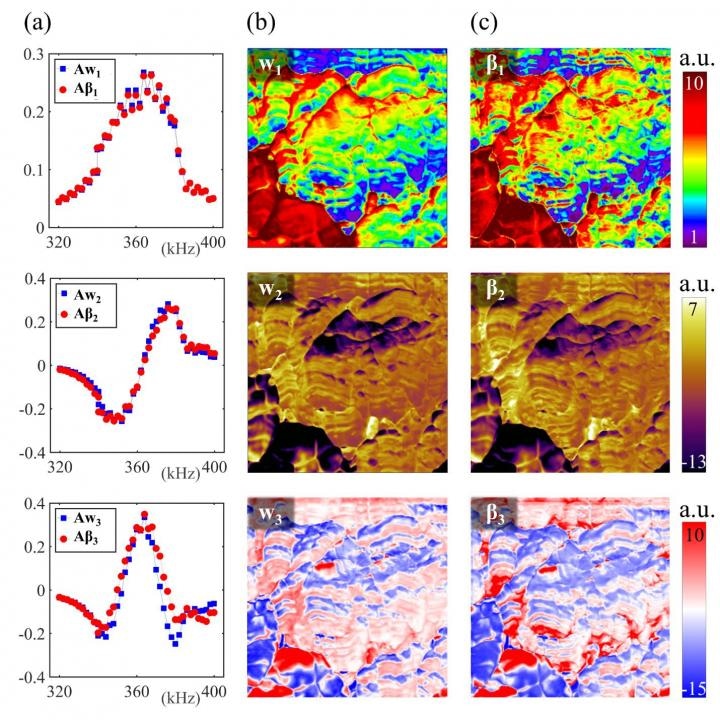Nov 19 2018
Atomic force microscopy (AFM), which was invented in 1986, has emerged as a robust tool to probe structures, materials, and devices at the nanoscale. In the last few years, supported by innovative data acquisition hardware and advanced data analytics, there is a solid push to bridge AFM and big data. It remains a formidable challenge, however, to gain clear mechanistic insights from brute force data analytics in AFM. In a paper recently reported in National Science Review, a research team at the University of Washington shows a pioneering approach to address this challenge.
 This is a comparison of PCA and SHO expansion for SE-PFM data of PZT; (a) first three PCA spectral eigenvectors in comparison with corresponding SHO spectral basis; (b) first three PCA spatial eigenvectors; (c) corresponding SHO spatial basis. (Credit - ©Science China Press)
This is a comparison of PCA and SHO expansion for SE-PFM data of PZT; (a) first three PCA spectral eigenvectors in comparison with corresponding SHO spectral basis; (b) first three PCA spatial eigenvectors; (c) corresponding SHO spatial basis. (Credit - ©Science China Press)
First, they formulate a sequential excitation (SE) strategy that stimulates the sample using a sequence of AC waveforms with diverse frequencies, each trapping cantilever-sample resonance at designated spatial points that reflects the underlying physics. In a sense, such an SE strategy is equivalent to the Nobel winning super-resolution microscopy in biology that turns particular fluorescent molecules on and off in a sequential manner for imaging, after which the sequence of data can be reconstructed. This targeted acquisition guarantees that the data is small but still of high quality, efficient, and physically applicable.
Although data reconstruction can be performed by fitting physically motivated simple harmonic oscillator (SHO) model, the process is not fast. Data analytic approach such as unsupervised principal component analysis (PCA) is extremely efficient, yet physical insight is absent. The team, however, detect a strong similarity between data processed by SHO and PCA, and they are able to substantiate mathematically that there is a solid relation between SHO and PCA data, enabling them to infer physical insight from PCA that is otherwise deficient.
Taking electromechanical coupling as an example, which is the scientific basis for technologically vital sensors, transducers, and actuators, the team shows that the new method offers much better accuracy and spatial resolution in comparison with the conventional approach. The connection between SHO and PCA data also makes it possible to accelerate data analysis by orders of magnitude, crucial for analysis on the fly in artificial intelligence and machine learning. Actually, in another paper reported in Nanoscale, the team has recently shown an artificial intelligent atomic force microscope that can classify different materials, identify crucial microstructure features, and perform additional probing for further understanding, all on its own without human interference.